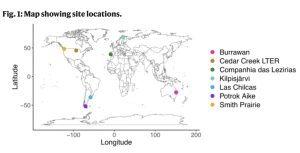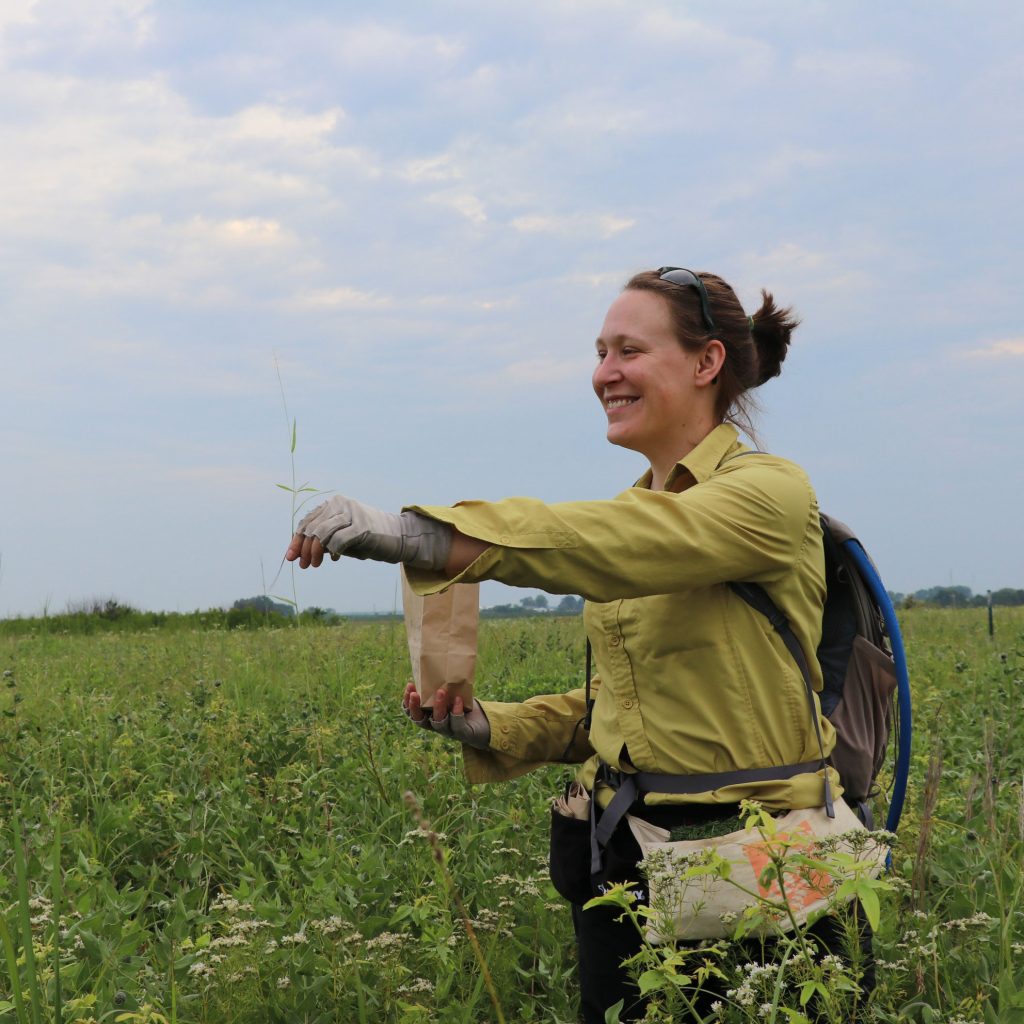As biodiversity loss wreaks havoc on grasslands worldwide, many have hoped that soil seed banks, or seeds stored in the soil waiting to sprout, would act as a biodiversity reservoir, preserving species that are disappearing aboveground.
However, a recent study published in Nature Communications by W.K. Kellogg Biological Station plant biologist Lauren Sullivan and her team challenges that assumption.
Impacts above and belowground
Starting around 2015, the team collected seed bank samples at seven Nutrient Network—NutNet—sites that varied in climate, environment, and productivity, and were located on four different continents ranging from a tundra grassland in Finland to a grassland in Argentina. They cut out four cores of soil per plot, put them on trays in a greenhouse, and waited for the seeds to germinate so they could identify and count them. Afterward, the samples went through a dormancy period to make sure nothing else sprouted. This whole process took several years.
 “We were hoping that the seedlings would be this cryptic reservoir of diversity, but we found that when global change factors such as nutrient additions and herbivore removal are acting on grasslands, that was not the case. The seed bank also decreases similarly in diversity,” said Sullivan, assistant professor in the College of Natural Science’s Department of Plant Biology and an Ecology, Evolution and Behavior Program faculty member.
“We were hoping that the seedlings would be this cryptic reservoir of diversity, but we found that when global change factors such as nutrient additions and herbivore removal are acting on grasslands, that was not the case. The seed bank also decreases similarly in diversity,” said Sullivan, assistant professor in the College of Natural Science’s Department of Plant Biology and an Ecology, Evolution and Behavior Program faculty member.
“These factors are not just affecting the aboveground communities but also the belowground communities.”
Grasslands are important because they support grazing, wildlife habitat, carbon sequestration and, notably, agriculture. With the rapid advancement of agriculture and other global changes, nutrients such as nitrogen and phosphorus are much more abundant in the air and soil, and native grassland herbivores are declining. Now, grasslands are considered the most endangered ecosystem on the planet.


A legacy of conservation; a commitment to sustainability.
3700 E. Gull Lake Drive
Hickory Corners, MI 49060
(269) 671-5117
info@kbs.msu.edu